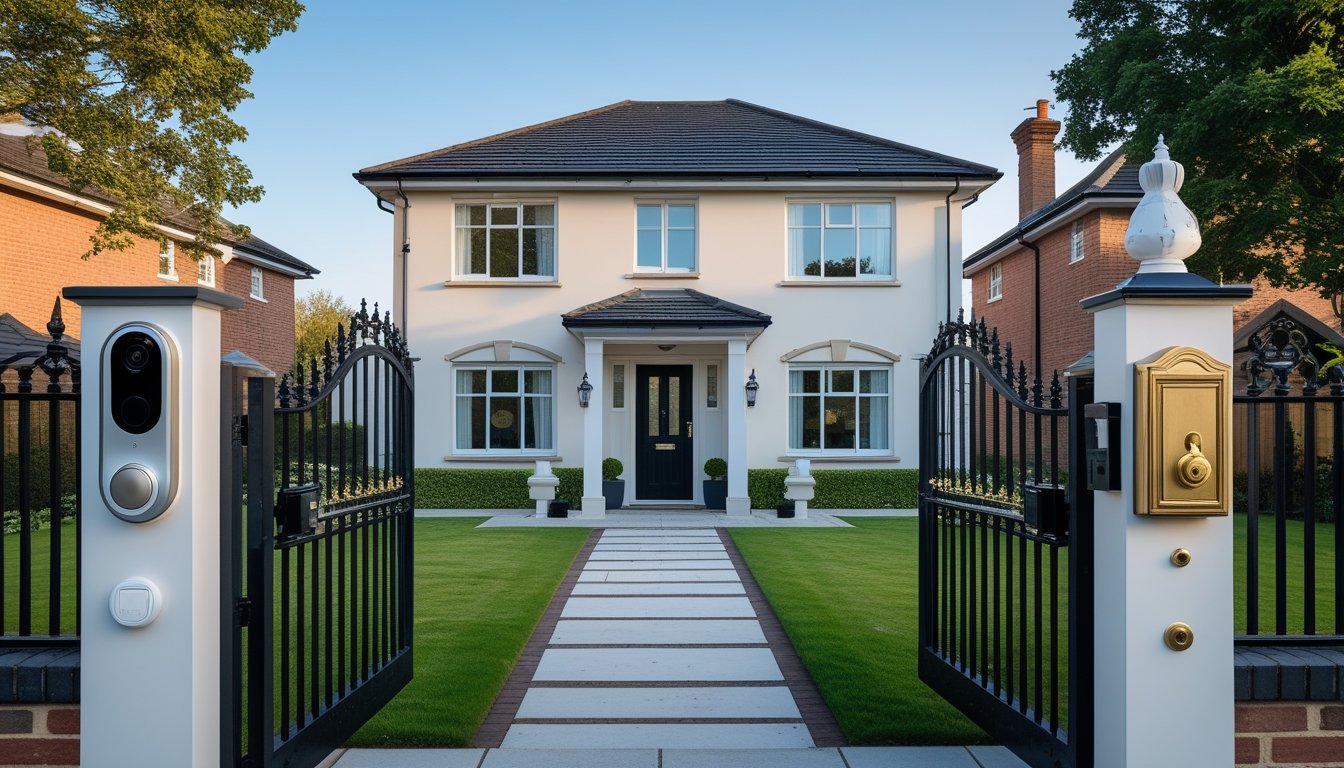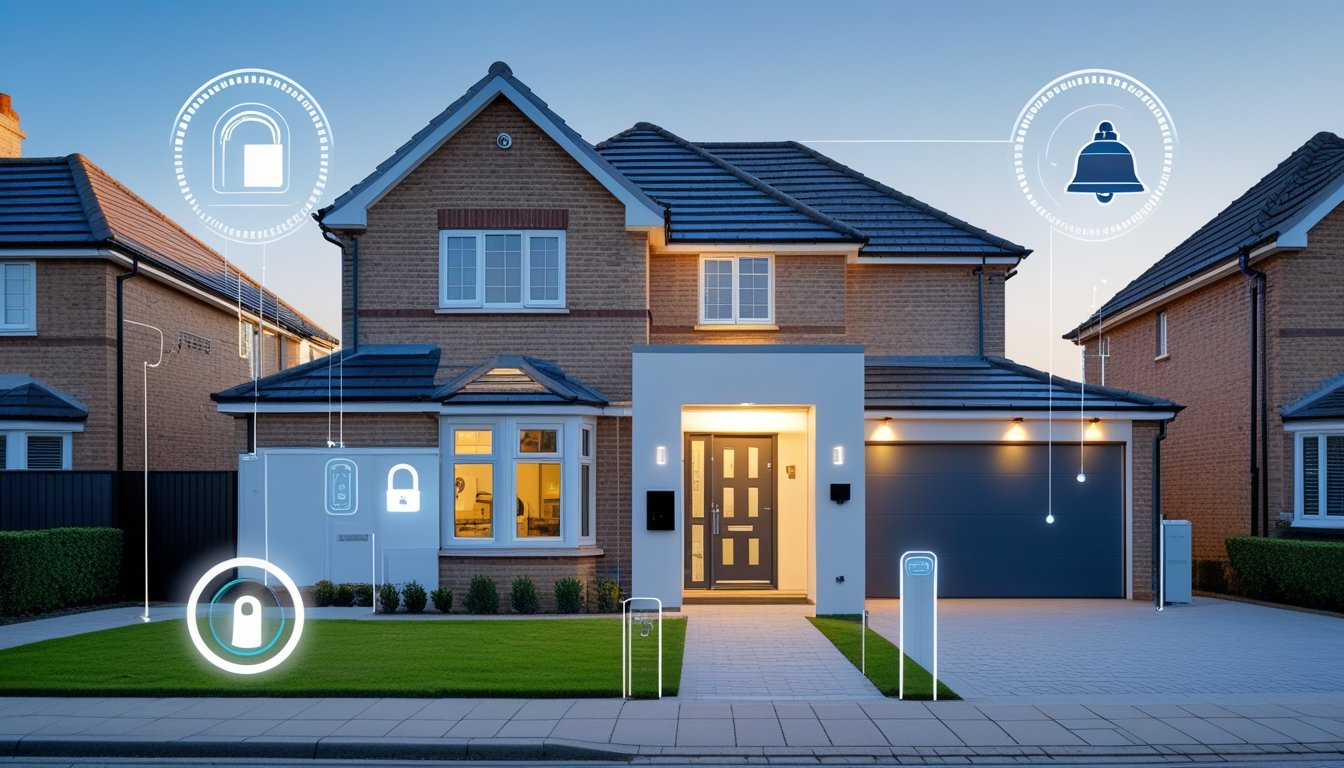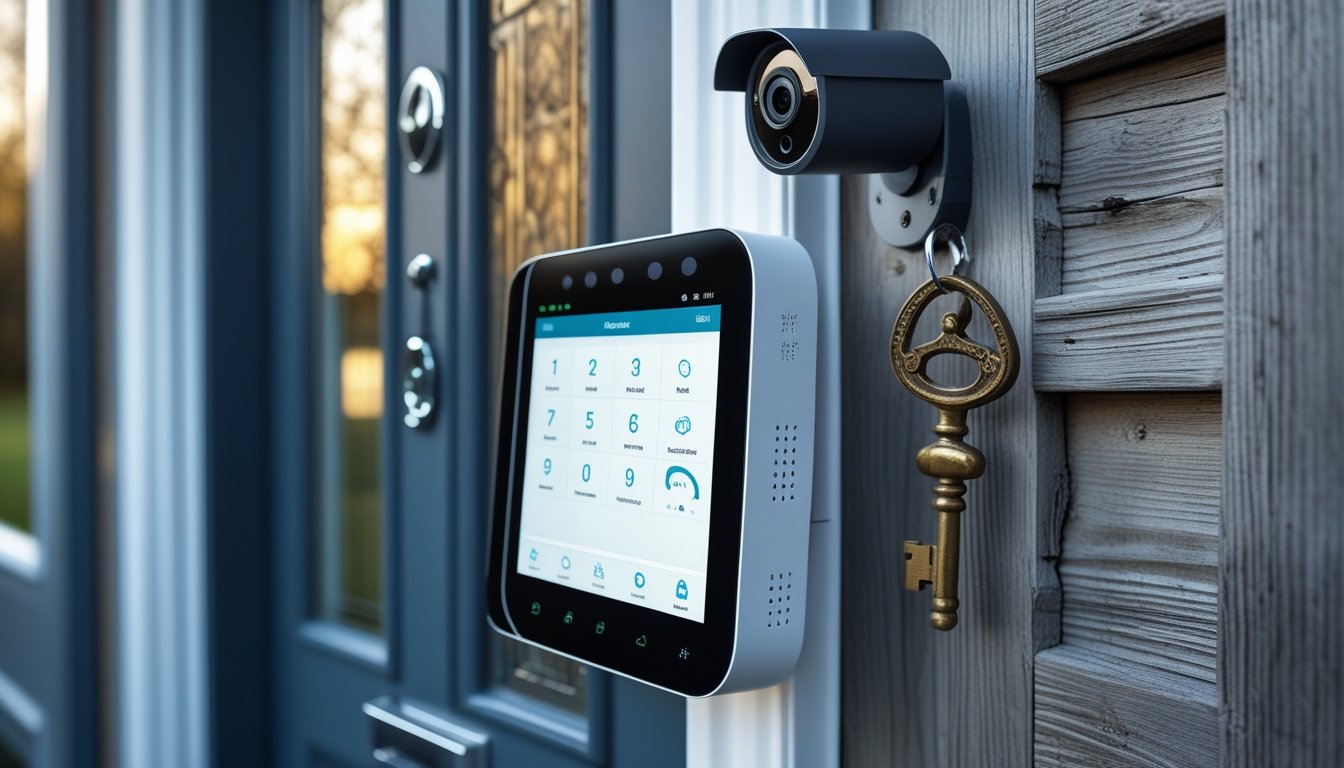Late updated: 14 Jul 2025 18:07
Written by: Elena Prescott
Historical Innovations In UK Home Security Technologies: A Journey Through Time
The history of home security in the United Kingdom is a fascinating journey of innovation and adaptation. Over the centuries, our methods for safeguarding homes have transformed remarkably. From the simple yet effective mechanical locks of the 18th and 19th centuries to the sophisticated, integrated smart security systems of today, the UK's home security technologies tell a story of continuous advancement. The drive to protect our homes has consistently led to advancements in technology that enhance safety and peace of mind.

In navigating through the timelines of UK home security, we find technological milestones that reflect broader societal changes. The industrial revolution not only brought mass-produced locks into everyday homes but also set the stage for modern innovations we rely on now. We can see how these historical developments have laid the groundwork for contemporary trends in home security, where remote monitoring and digital connectivity are the norm.
Understanding this journey helps us appreciate the various technologies available today and their significance in our everyday lives. It highlights the ingenuity involved in developing solutions that meet our ever-evolving security needs. Delving into the historical innovations in UK home security reminds us of the human element—our innate desire to feel secure and the lengths we've gone to achieve it.
Key Takeaways
- The UK's home security evolved from basic locks to advanced systems.
- Technological milestones parallel broader societal changes.
- Modern security incorporates historical innovations and contemporary trends.
Milestones in UK Home Security Innovations

The United Kingdom has seen significant advancements in home security technologies over the decades. From early mechanical locks to state-of-the-art access control systems, each milestone reflects a response to the evolving nature of security threats.
Early Mechanical Security Devices
In the early days, security was primarily reliant on mechanical innovations. Engineers and locksmiths crafted intricate locks that made it difficult for intruders to gain access. The Bramah lock, patented in 1784, is a prime example. Its unique design posed a significant challenge to locksmiths attempting to pick it. Joseph Bramah, a prolific inventor, influenced subsequent designs and standardised many practices in the locksmithing trade. These mechanical security devices laid the groundwork for modern innovations.
Pioneers of Electro-Magnetic Alarm Systems
Electricity's introduction led to a new era in security systems. Edwin Holmes pioneered the commercialisation of the electro-magnetic alarm system in the mid-19th century. His system alerted homeowners of unauthorized entries by connecting to doors and windows. This innovation turned home security from passive to active, offering immediate warnings. Our system utilised electric circuits to detect breaches, marking a fundamental shift. Holmes' approach continues to influence modern alarm systems.
Video Surveillance and Intercom Advancements
Video surveillance has far surpassed its origins, which date back to the mid-20th century. Surveillance cameras have since evolved from simple black-and-white monitors to high-definition, internet-connected devices. Our modern systems allow homeowners to monitor properties in real-time from any location. The intercom system, another vital advancement, simplifies communication and verification of visitors. Both technologies have become staples in residential and commercial security solutions globally.
Emergence of Access Control Technologies
Access control technologies have revolutionised how we secure our homes. From keypad entries to biometric systems, the range of options has expanded dramatically. Marie Van Brittan Brown's invention of the home security system laid the foundation for these developments. Her approach integrated cameras, microphones, and remote-controlled door locks, allowing residents to verify and grant access selectively. This personalised control enhances security, offering convenience and peace of mind. Access control continues to adapt, incorporating new technologies and addressing current security challenges.
Contemporary Trends in UK Home Security Technology

Advancements in UK home security are transforming the way we protect our homes. Artificial intelligence, smart integration, and sustainability are at the forefront of these innovations. These developments enhance safety, offer greater convenience, and contribute to a more eco-friendly environment.
Home Security Automation and Smart Integration
Smart home integration is revolutionising security systems in the UK. Automated systems allow us to control lighting, locks, and alarms remotely. This flexibility enhances security by enabling real-time alerts and responses. Smart hubs, such as Amazon Echo or Google Home, connect various devices, creating an integrated network.
Additionally, the Internet of Things (IoT) plays a significant role. By connecting all devices, it provides seamless control over different security aspects. Homeowners can manage and monitor their security setups through smartphones or tablets, resulting in a more efficient and personalised security experience.
Artificial Intelligence and Machine Learning in Security
AI and machine learning are critical in advancing UK security technology. These technologies enable smart cameras to recognise faces and detect unusual activities. With machine learning algorithms, systems can learn from past incidents, improving future threat detection.
AI-driven systems utilise predictive analytics. They analyse data patterns to anticipate potential security threats. This predictive capability enables proactive measures, ensuring enhanced home security. Consequently, false alarms are minimised, and responses are better tailored to actual threats.
Sustainability and the Future of Home Security
Sustainability is becoming a priority in home security. Modern systems increasingly incorporate sustainable technologies. Solar-powered cameras and alarms reduce reliance on traditional energy sources. This shift not only decreases energy costs but also minimises the carbon footprint of security systems.
Moreover, some security systems utilise recyclable materials, furthering environmental responsibility. There is growing interest in systems that combine eco-friendly innovations with robust security features. Integrating sustainability with advanced security technologies represents a forward-thinking approach, aligning with broader goals of environmental conservation.
Frequently Asked Questions
Let's address some common questions about the development of home security technologies in the UK, covering key historical milestones and current challenges, including legal and privacy concerns related to CCTV.
What was the year of the first deployment of CCTV systems in the UK?
The first CCTV systems were deployed in the UK in 1960. They were initially used for observing public events and later for security and monitoring purposes in various industries.
How has the prevalence of CCTV in the UK changed over time?
CCTV usage has expanded significantly. From limited initial installations, it has grown to cover public spaces, businesses, and private properties extensively across the UK. This proliferation reflects technological advances and increased security concerns.
What are the most significant advancements in UK home security systems to date?
Significant advancements include the transition from mechanical locks to electronic and smart locks, the introduction of integrated security systems, and the incorporation of artificial intelligence for enhanced monitoring and threat detection.
What role has the UK population density played in the evolution of home security technologies?
Higher population density has increased the demand for enhanced security measures. Urban areas particularly have driven innovation, necessitating more sophisticated technologies to address the complexities of safeguarding densely populated environments.
In terms of home security innovations, how does the UK compare with other countries?
The UK is often at the forefront of home security innovations, comparable to countries like the US and Germany. The adoption of smart technologies and comprehensive CCTV coverage reflects a proactive approach to security solutions.
What legal and privacy concerns have arisen with the proliferation of CCTV in the UK?
The widespread use of CCTV in the UK has sparked debates around privacy and data protection. Legal frameworks have been established to regulate its use, balancing public safety with individual privacy rights. These include guidelines on surveillance practices and data handling.
